Why we need to reuse waste energy to achieve net-zero heating systems
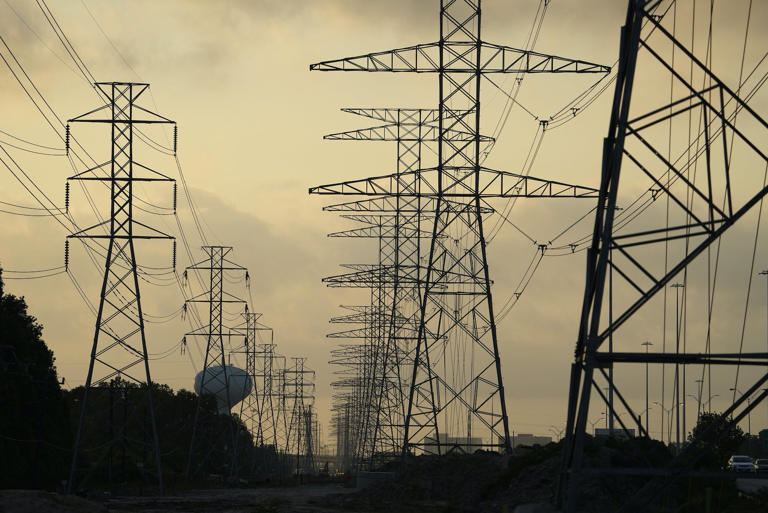
Just generating heat is not enough. We must also capture, store, and utilize waste heat.
We’re already pushing the system on the hottest days of the year to keep our electric air conditioning running, mainly by supplementing with inefficient carbon-producing natural gas or coal power plants during peak demand periods.
If we were all relying on electrical forms of heating, electricity demand would be substantially higher on the coldest days of the year and overwhelm the grid. The solution to this problem, however, lies not in the heat we generate but the heat we reuse.
The importance of heating
Heating systems keep many of us alive.
In a cold-climate country such as Canada it takes far, far more energy to heat homes in winter than to cool them in summer. To compare the overall energy required for heating and cooling buildings we look at heating degree days (HDD) versus cooling degree days (CDD).
In Toronto, for example, heating degree days outnumber cooling degree days about 7-1. Consumers may not be aware of this huge disparity, since most home heating comes from burning natural gas, while most cooling comes from electricity, but if we moved all that demand to the grid, it would become apparent all too quickly.France 24'We need to make sure clean energy transitions are just and are for everyone, countries and people' View on Watch
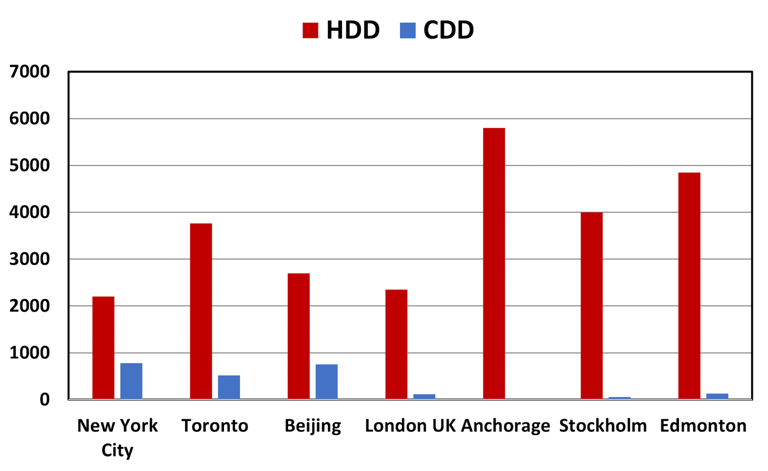
Chart representing heating degree days and cooling degree days by various key urban areas.© (James S. Cotton)
Air conditioning already pushes the electrical grid when cooling indoor spaces to 23 C when it is above 35 C outside, but warming our indoor spaces to 20 C when it is -40 C outside means covering a 60-degree gap.
If we were to move all our heating demands to the electrical grid, even with the most modern, efficient air-source heat pumps, peak demand would be about four to five times what it is today, and that’s not a problem anyone can solve quickly.
Utilize everything
Fortunately, there is another option that can keep us warm without burning additional fuel. By storing the heat generated from all sources, including waste heat, and drawing from it through the coldest months of the year, our research shows we can use discarded waste heat.
A huge amount of heat generated today is simply dissipated into our surroundings and wasted, and when it’s cold outside, we use new energy to make fresh heat. That doesn’t make sense.
A typical pizza restaurant produces enough leftover heat every year to heat seven family homes. A hockey arena creates huge amounts of heat in the process of making ice and keeping it frozen.
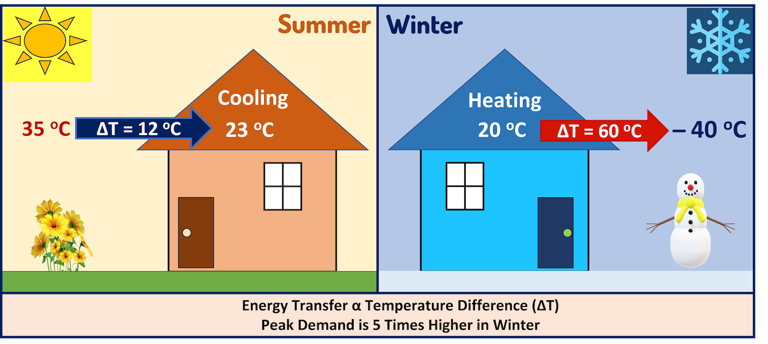
A chart showing the different demands of heating versus cooling systems at peak demand.© (James S. Cotton)
Same for a grocery store and its many freezers and refrigerators, a factory running industrial-scale production equipment, and any large building running commercial air-conditioners. Today we dump all that heat into the air instead of holding onto it for when we need it, leading to unnecessary greenhouse gas emissions.
We need to start seeing the heat we make as a readily recoverable, carbon-free resource and do much more to harness it. There is already technology that can harvest and store such heat for months in underground thermal batteries until it is needed.
Integrated heat harvesting systems
We can recover the heat by piping water through hot underground batteries and running those pipes into nearby buildings, like a big boiler-and-radiator system, except the boiler is actually an underground battery charged not with electricity, but with heat.
Read more: A 21st-century reinvention of the electric grid is crucial for solving the climate change crisis
McMaster University is preparing to put replacement back-up generators into play through peak-shaving programs.
When demand is critical on the hottest days of the year, the gas-powered generators will create the extra electricity needed to operate the campus—including sensitive labs and research facilities. If we were to capture and store the waste heat produced and tie into it in the winter, we could halve their net carbon emissions into the atmosphere.
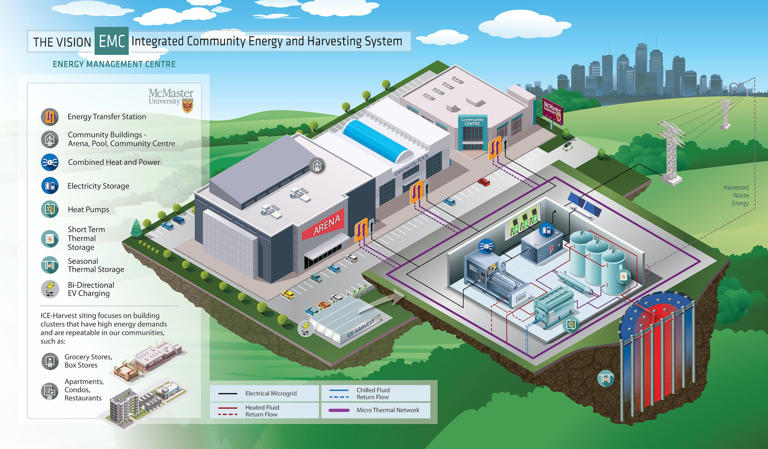
The Modular Integrated Community Energy and Harvesting System has the potential to provide winter-long heat at considerable carbon savings.© (James S.Cotton)
McMaster leads a wider research co-operative demonstration project called Integrated Community Energy and Harvesting, or ICE-Harvest, with 30 municipalities and 19 industrial partners taking part.
In a new paper in the journal Applied Energy, we show how such localized systems use the same energy twice.
Heat batteries already exist
Capturing, saving and using leftover heat is an efficient solution that can be managed by localized microthermal networks. Think of it this way: the Canadian chain Pizza Pizza is piloting a system that uses heat recovered from its ovens to heat its own hot water. The chain can then sell what is left over. In the same way an arena can sell its heat to a retirement home across the street; a grocery store to a neighbouring school, and so on.
Read more: A tenth of all electricity is lost in the grid. Superconducting cables can help
This solution would require new infrastructure, including buried pipes to circulate heat from source to storage and from storage to user. That would be expensive to set up, but such costs could readily be spread out over decades, as previous generations did to build highways, hydro lines and gas pipelines.
Existing and emerging technology can measure and regulate the gathering, sharing and distribution of heat in a system where the accounts of heat producers are credited as they add to the supply and end users are charged when they draw from the supply. It is just a matter of time before industrial, commercial and institutional players realize there is value in their cooling towers.
These are not far-fetched ideas. They are practical and available to be implemented now and are a realistic climate action strategy. Here in the northern hemisphere, heat is a valuable resource that’s already there waiting to be tapped, and we can no longer afford to waste it.
This article is republished from The Conversation, a nonprofit news site dedicated to sharing ideas from academic experts.
Read more:
Extreme heat is particularly hard on older adults – an aging population and climate change put ever more people at risk
Keen to get off gas in your home, but struggling to make the switch? Research shows you’re not alone
James (Jim) S. Cotton works for and owns shares in Harvest Systems Inc. He receives funding from Natural Sciences and Engineering Research Council of Canada (CRDPJ 401203143 - 2018) and the Ministry of Research and Innovation and Science administered by Ontario Centre of Innovation (27851-2018), Canada Foundation for Innovation (CFI) and Ontario Research Fund - Research Infrastructure. The author would also like to acknowledge the McMaster Energy Research Cooperative partners for their contributions: HCE Energy Inc., GridSmartCity LDC Cooperative (Brantford Power, Burlington Hydro, Energy+, ENWIN, ERTH Power, Essex Power Lines, Halton Hills Hydro, Kingston Hydro, Kitchener Wilmot Hydro, Milton Hydro, Niagara Peninsula Energy, Oakville Enterprises Corp., Waterloo North Hydro, Welland Hydro Electric Systems Corp.), Alectra Utilities, Enbridge Gas, S2e Technologies, Geosource Energy and Siemens Canada Limited
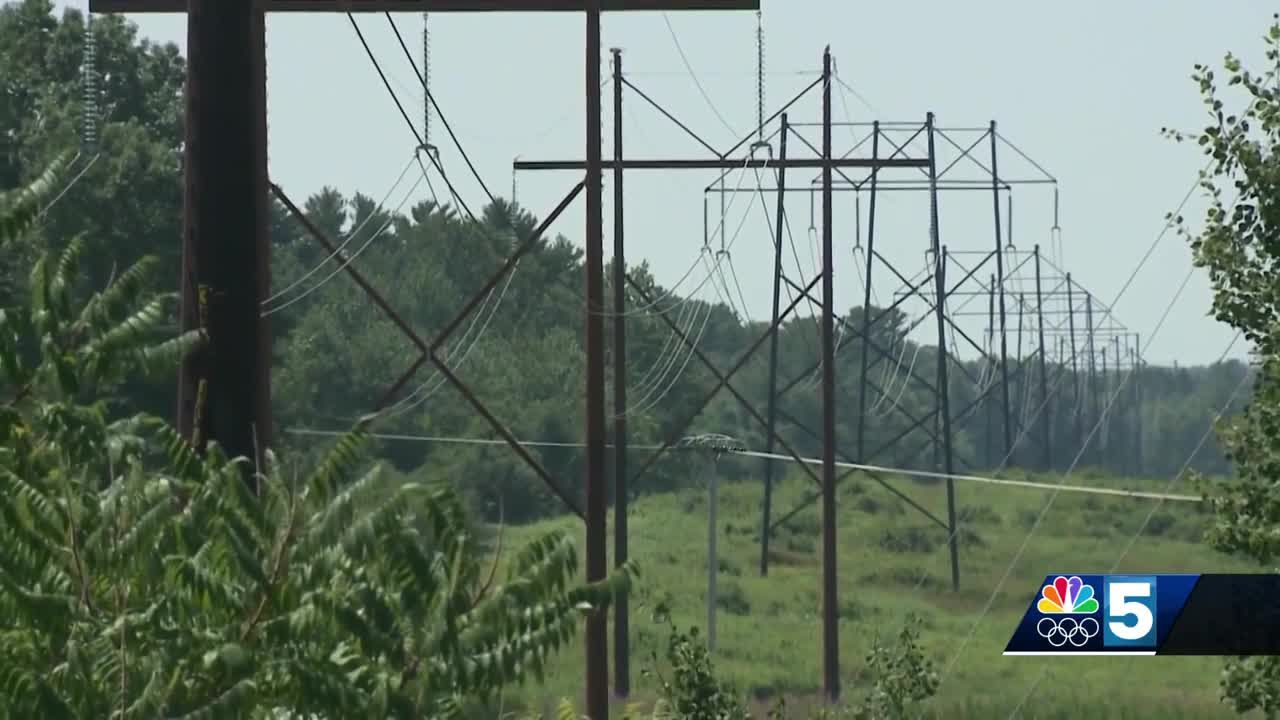
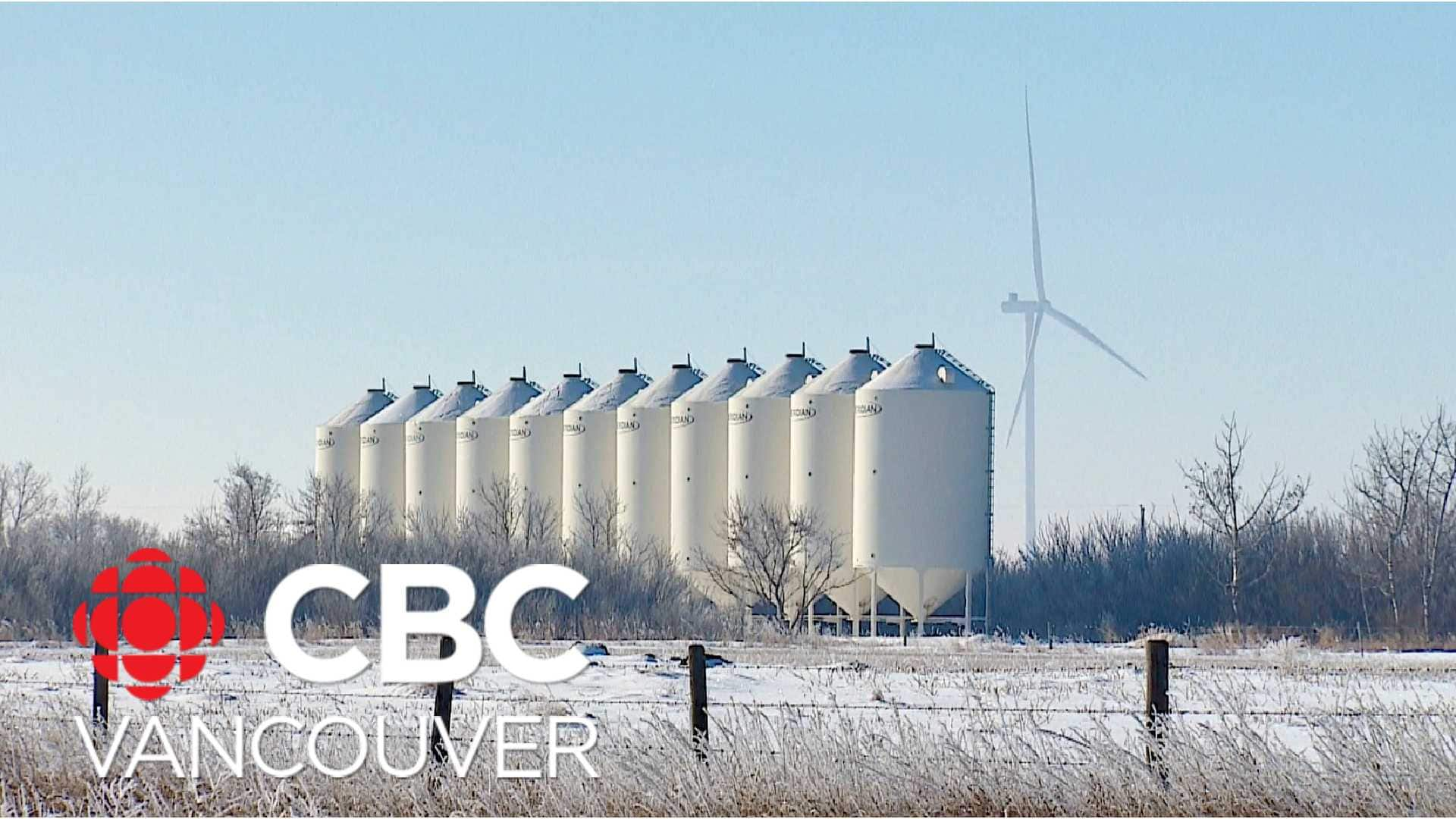
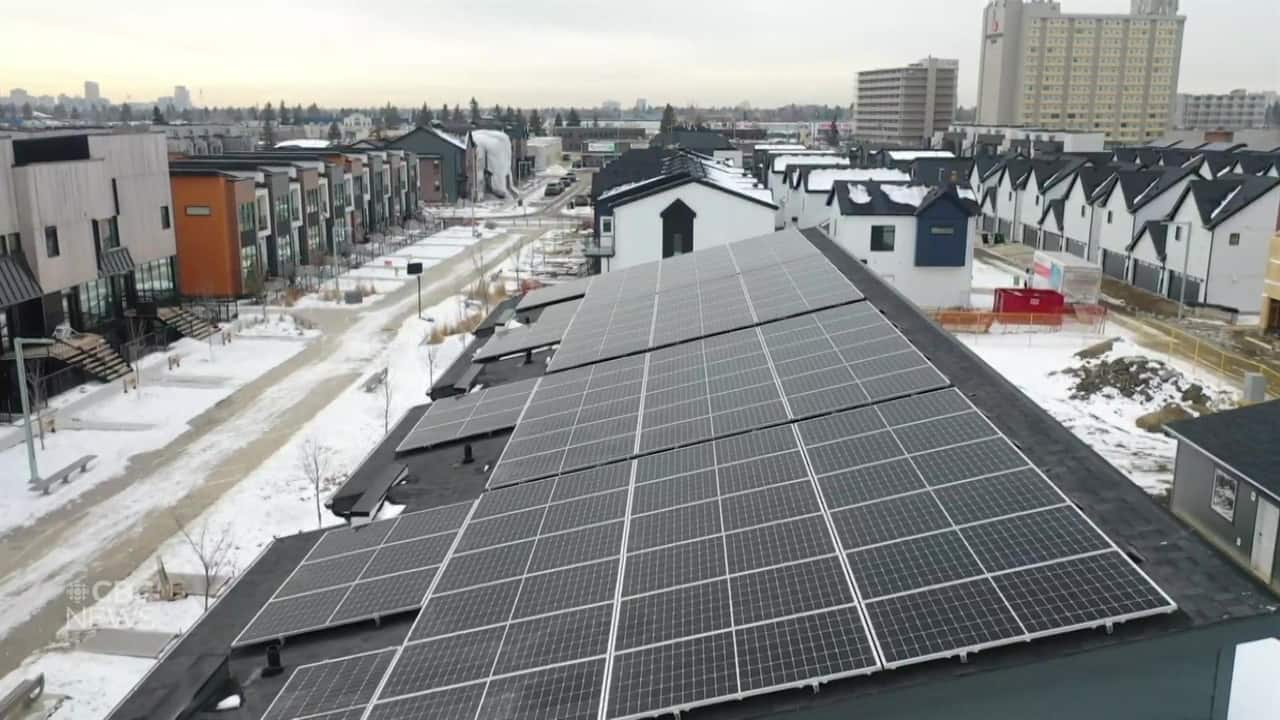
No comments:
Post a Comment